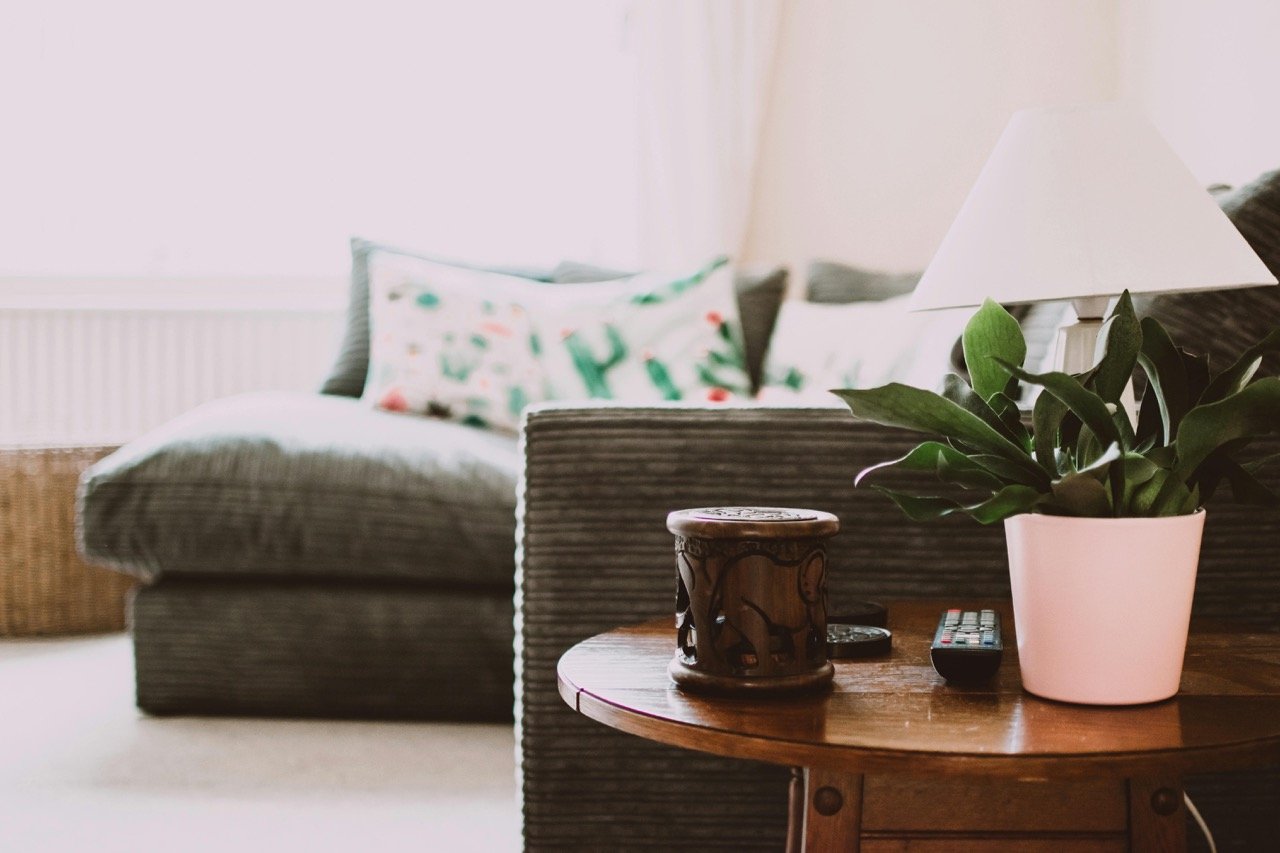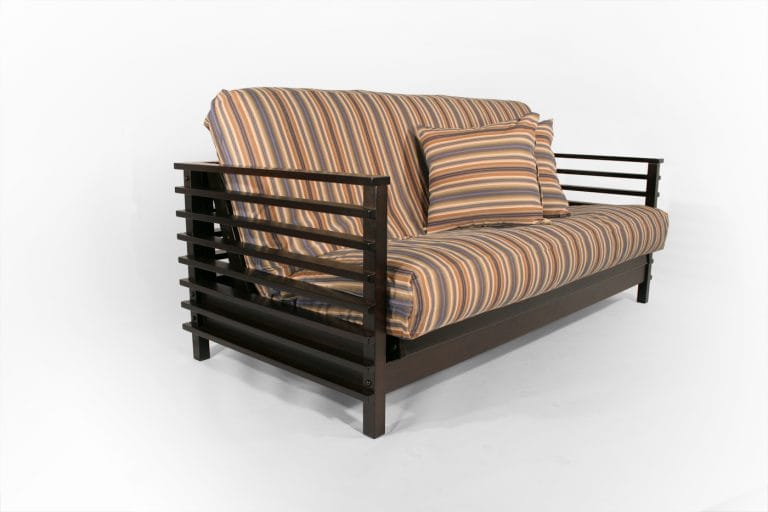Can I Use a Futon as My Primary Bed?
There is a persistent misconception that futon mattresses are only suitable for college dorms or occasional guests. In reality, modern futons have evolved into a serious alternative to conventional beds. There is a futon setup for almost every budget, sleeping style, and space. With one of the largest selections of futon mattresses in the United States, Futonland helps many customers choose a futon specifically intended for nightly, long-term use.

What Is a Futon, Really?
When most people hear the word “futon,” they imagine the whole package: the frame, the mattress, and the cover. Technically, the futon is the mattress itself. It is a mattress that bends, designed to sit on a frame that can function as both a sofa and a bed.
Traditional futons were stuffed entirely with cotton. Today, modern futon mattresses are made with a wide range of materials, including foam, innersprings, wool, latex, and organic fibers. That broader mix of ingredients allows manufacturers to build futons that feel closer to conventional mattresses while still working on convertible frames.
Why Futons Got a Bad Reputation
A lot of the skepticism about using a futon as a primary bed comes from early experiences with low-cost sets. Inexpensive metal frame futons often come bundled with very basic mattresses filled with recycled textile fibers or shredded yarn mixed with a small amount of cotton. These pads can be heavy, uneven, and prone to compressing into hard, lumpy surfaces over time.
If your only exposure to futons was one of these entry-level sets, it makes sense that you might question whether you can sleep on a futon every night. Many people assume a sofa bed would be more comfortable, only to find that a thin sofa bed mattress folded inside a metal mechanism can feel even less supportive than a good futon.
Why Futons Work Well in Small Spaces
The most common reason to consider a futon for everyday sleeping is space. In urban areas, studio apartments and smaller bedrooms often cannot comfortably fit both a full bed and a separate sofa. A futon allows one piece of furniture to serve as both seating and a bed.
If you have a second room—such as a home office or guest room—and do not want to give up much floor space to a traditional bed, a futon can be an ideal solution. A well-chosen futon sofa bed lets you host overnight guests or use the room as your primary sleeping area while still keeping it functional for daytime activities.
Types of Futon Mattresses
Whether a futon can work as your primary bed depends a lot on the type of mattress you choose. Not all futon mattresses are created equal. Here are the major categories and how they perform for everyday sleeping.
All-Cotton Futon Mattresses
The most basic futon is an all-cotton mattress. Common thicknesses include 4″, 6″, and 8″ models, such as a traditional all-cotton futon mattress. In this style, layers of cotton batting are compressed and tufted together.
The thinner the cotton futon, the firmer it tends to feel. Over time, the cotton fibers compress and harden, especially under the heaviest parts of your body. A thin cotton futon can work as a firm sleeping surface for some people, but many find it more comfortable as a guest mattress or for occasional use rather than nightly sleeping.
Cotton and Foam Futon Mattresses
The next step up is the cotton-and-foam category. Most of these mattresses are around 8″ thick and contain one or more foam layers sandwiched between cotton. A classic configuration, often called a double foam futon, uses two one-inch slabs of foam to stabilize the cotton and reduce shifting.
The general rule is that the higher the foam-to-cotton ratio, the better the support and long-term comfort. In more advanced designs, 4–6 inches of foam form the core of the mattress, with cotton (or wool) wrapped around it. This structure helps the mattress hold its shape and provides more reliable back support, making it a better choice if you plan to use your futon as a primary bed.
High-Density Foam Futon Mattresses
High-quality foam futon mattresses use multiple layers of high-density foam instead of cotton. A thin layer of poly-dacron may be used over the foam for a smoother, more upholstered feel. Because there is little or no cotton to compress, these mattresses tend to retain their resilience for much longer.
Unlike older cotton futons with rounded edges, many foam futon mattresses have a boxed-edge profile that looks more like a conventional mattress. Higher-density foams—often in the 1.8 to 2.2 density range or above—offer better support and are less likely to develop deep body impressions.
These mattresses are very well suited for nightly sleeping. On a solid futon frame or a supportive platform bed frame, a good foam futon can feel surprisingly close to a standard foam mattress, while still bending as needed when you convert the frame.
Memory Foam Futon Mattresses
Memory foam adds another level of contouring and pressure relief. Most memory foam futon mattresses include 1–3 inches of visco elastic memory foam near the surface, supported by multiple layers of high-density base foam. The memory foam gently molds around your body, while the support layers keep your spine aligned.
Because memory foam is both dense and flexible, it works very well on convertible frames. The mattress can bend with the frame and then return to a smooth, even shape, making it ideal if you open and close your futon daily. It also provides a comfortable seating surface when the futon is in sofa position. For people who want a futon that feels more like a modern memory foam bed, this style is often one of the best options for everyday sleeping.
Innerspring Futon Mattresses
Innerspring futon mattresses incorporate coils similar to those found in traditional mattresses. The springs help keep you elevated from the slats of the frame and can feel familiar if you are used to a conventional innerspring bed.
However, innerspring futons are heavier and less flexible than foam or cotton designs. If you plan to open and close your futon every day, the extra weight and stiffness can make conversions harder and put more stress on the frame. When used mainly in the flat position as a bed, innerspring futons can be a good solution, but they are less ideal if your futon will function as a sofa most of the time.
Organic Futon Mattresses
For shoppers who prioritize natural materials, there are also organic futon mattresses. These follow the same basic constructions described above, but use organic and more natural ingredients such as organic cotton, natural wool, natural latex, and soy-based foam instead of conventional polyurethane foam.
Latex, which comes from the sap of rubber trees, is especially durable and can last significantly longer than many standard foam cores. Paired with organic cotton and wool, an organic futon can provide a supportive, breathable, and long-lasting primary bed that aligns with a low-chemical lifestyle.
So, Can You Use a Futon as Your Primary Bed?
Returning to the original question—“Can I use a futon as my primary bed?”—the answer is yes. With the right mattress and frame, futons for everyday sleeping can absolutely serve as your main bed. In many cases, a well-chosen futon can be a more affordable and more flexible solution than a higher-end conventional mattress plus a separate sofa.
For daily use, you will want to focus on higher-quality constructions: foam-and-cotton cores with substantial support, all high-density foam builds, memory foam hybrids, innerspring futons intended for bed use, or organic designs. Pair your mattress with a sturdy frame and consider how often you will convert it between sofa and bed positions.
Comfort, quality, and longevity should always guide your decision. Futonland offers a wide selection of everyday futon mattresses and complete futon sets and packages, and can help you find a combination that matches your sleeping habits, space, and budget. With the right choices, a futon is not just a backup bed—it can be your primary, comfortable place to sleep for many years.






